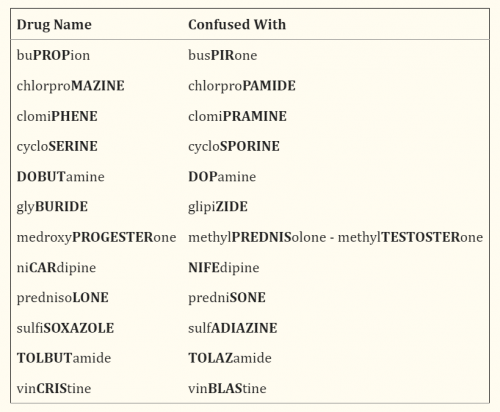Call me slow. I’ve subconsciously seen those capital letters in drug names for years. But I never really paid attention or thought much about them. For whatever reason, I just now realized that they are EVERYwhere!
So I decided to investigate. Technically, they are called tall man letters. Here are some examples:

Certain parts of the drug name are capitalized to highlight differences from a drug with similar spelling. Note the similarities of the drugs in each row, and how the capital letters set them apart.
Studies from 20 years ago have shown that drug names are easier to distinguish using tall man letters. From a practical standpoint, fewer medication errors occur when tall man letters are used.
This technique is now used on preprinted pharmacy labels, and in electronic medical record systems. Surveys have shown that half of respondents have used tall man lettering in conjunction with pharmacy labels and medical records. Those found on labels were considered most effective, and those on preprinted order forms was least effective.
The use of tall man characters is now so pervasive that they are just part of the background. But a very important part. Now you (and I) know!
Reference:Tall man letters are gaining wide acceptance. P T. 2012 Mar;37(3):132-48. PMID: 22605902; PMCID: PMC3351881.
